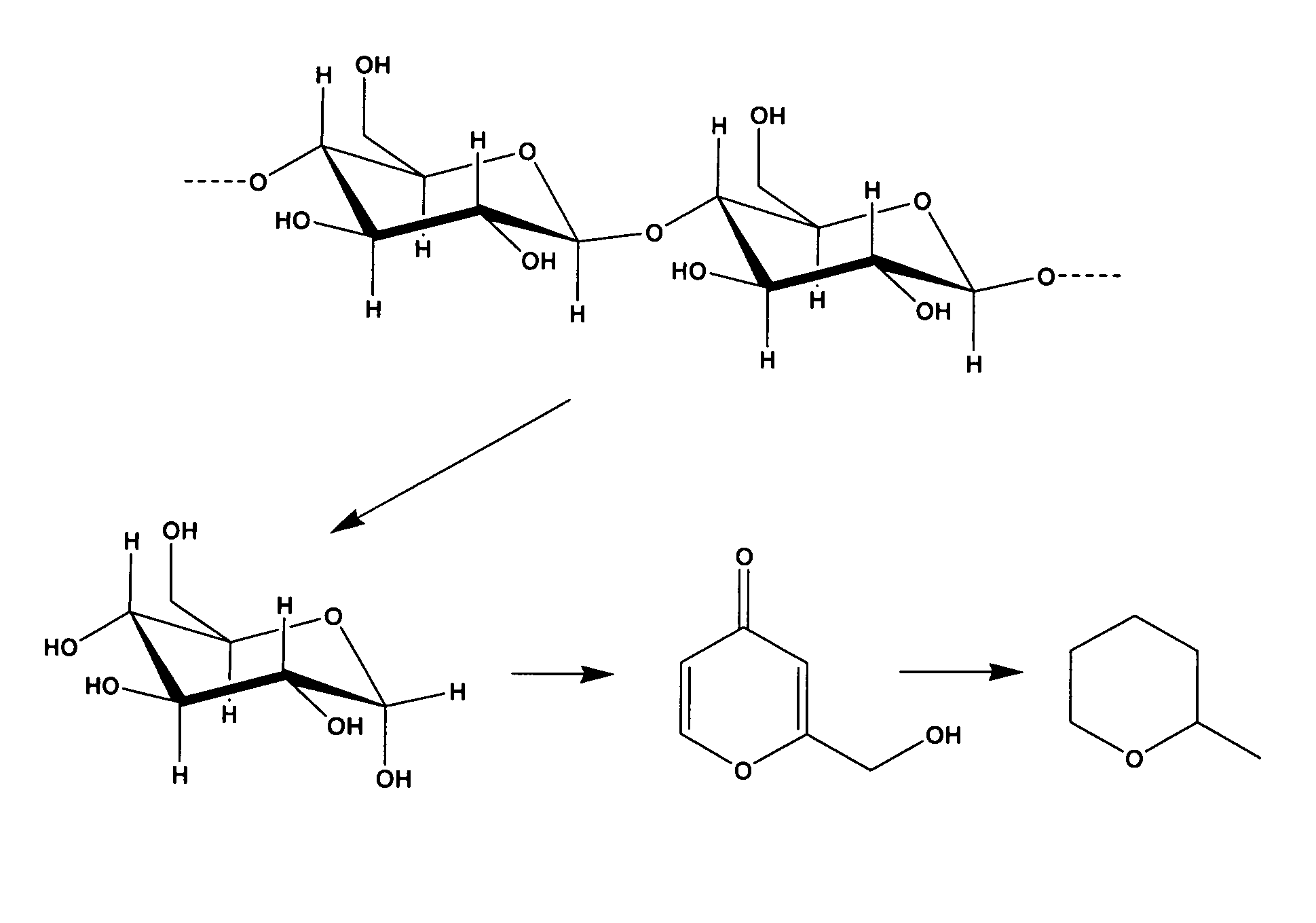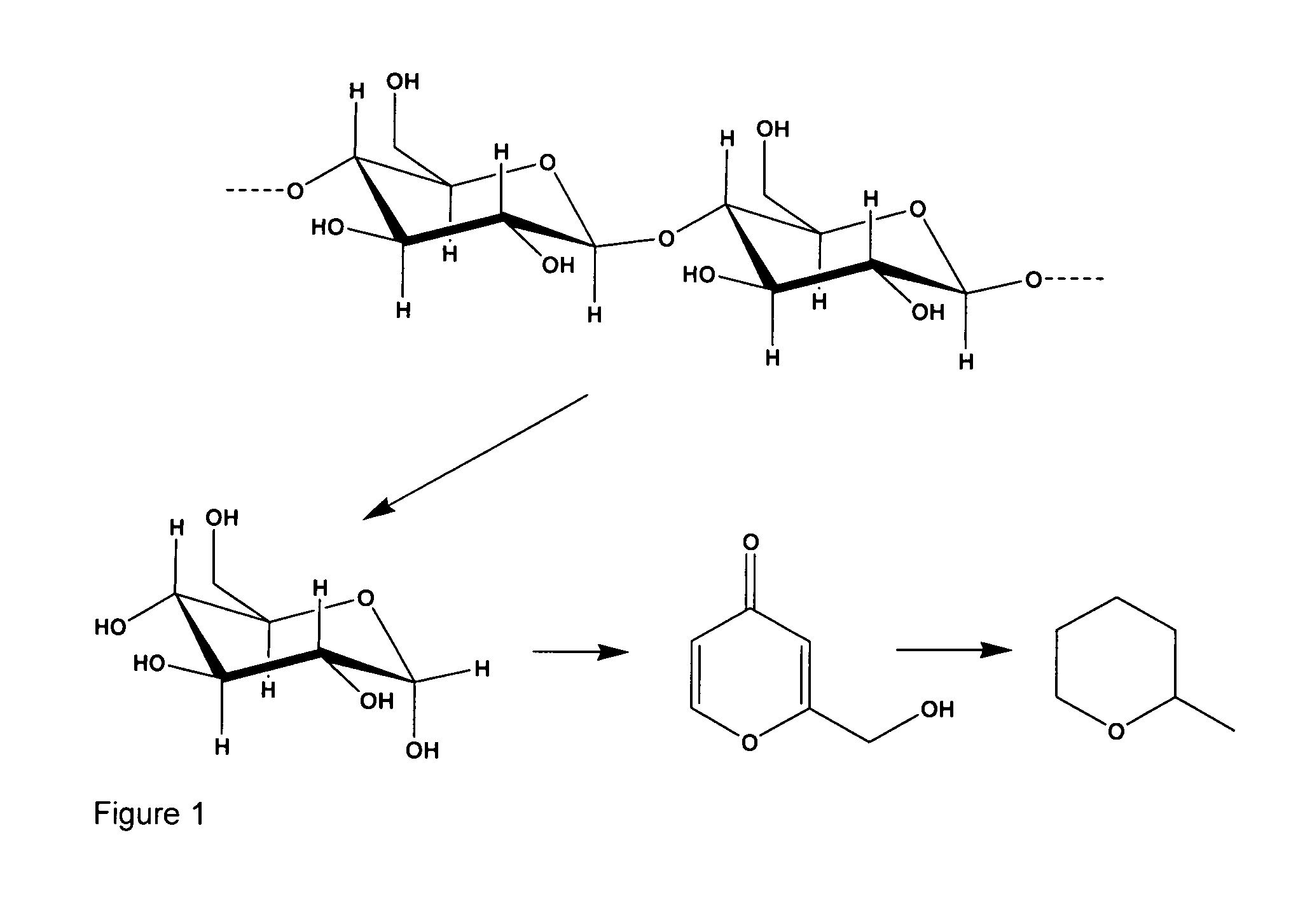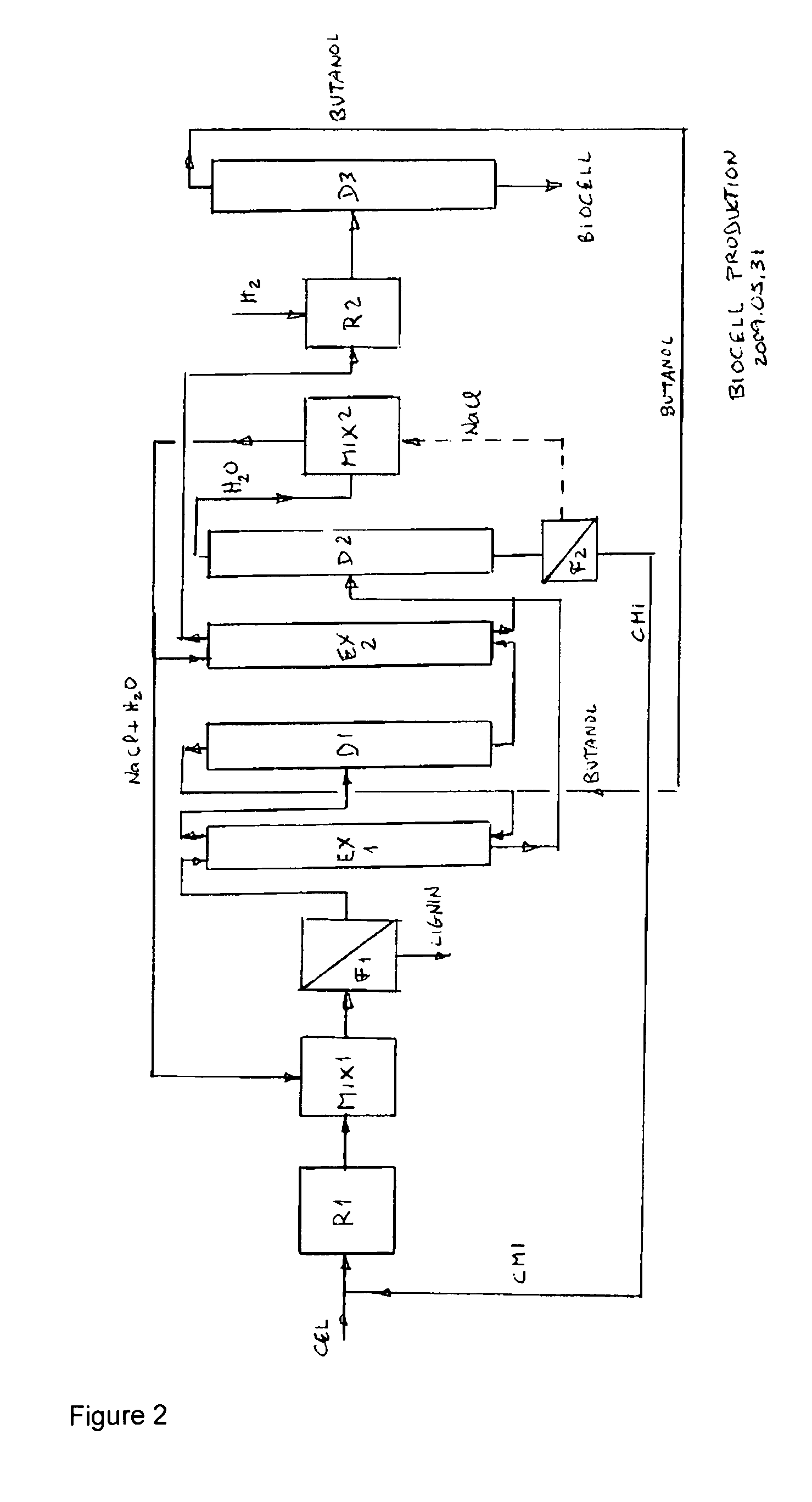Process for converting cellulose in a liquid biofuel using N-methyl imidazolium chloride
a technology of liquid biofuel and cellulose, which is applied in the direction of liquid carbonaceous fuels, hydrocarbon oil treatment, organic chemistry, etc., can solve the problems of affecting the quality of life of the product, and affecting the economic benefits of the country
- Summary
- Abstract
- Description
- Claims
- Application Information
AI Technical Summary
Benefits of technology
Problems solved by technology
Method used
Image
Examples
example
[0055]
In a stirred glass 250 ml reactor we introducedN methyl imidazolium chloride 83 gWe added slowlyHydrochloric acid 37%100 mlWe distilled most of the water and some hydrochloric acidout, until at 0, 1 bar and 90° C. no more water distilled. Weobtained a mixture with pH = 1.We added slowly under stirringCellulose 20 gThis mixture was heated at 60° C. during one hour.Then we added:A 10% solution of sodium chloride in water 50 g
[0056]After stirring, we extracted 3 times with 100 g butanol each time.
[0057]The butanol extracts were evaporated until a volume of 50 ml was reached.
[0058]This concentrate was extracted 3 times, each time with 50 ml of a water solution containing 10% sodium chloride in order to eliminate traces of MIC contained in the butanol solution.
[0059]The butanol concentrate almost free from chloride ions was introduced in a Parr reactor, as well as 2 g of a catalyst of palladium over alumina. The reactor was inertised 5 times with nitrogen, and heated during 2 hours...
PUM
| Property | Measurement | Unit |
|---|---|---|
| temperature | aaaaa | aaaaa |
| temperature | aaaaa | aaaaa |
| pressure | aaaaa | aaaaa |
Abstract
Description
Claims
Application Information
 Login to View More
Login to View More - R&D
- Intellectual Property
- Life Sciences
- Materials
- Tech Scout
- Unparalleled Data Quality
- Higher Quality Content
- 60% Fewer Hallucinations
Browse by: Latest US Patents, China's latest patents, Technical Efficacy Thesaurus, Application Domain, Technology Topic, Popular Technical Reports.
© 2025 PatSnap. All rights reserved.Legal|Privacy policy|Modern Slavery Act Transparency Statement|Sitemap|About US| Contact US: help@patsnap.com



